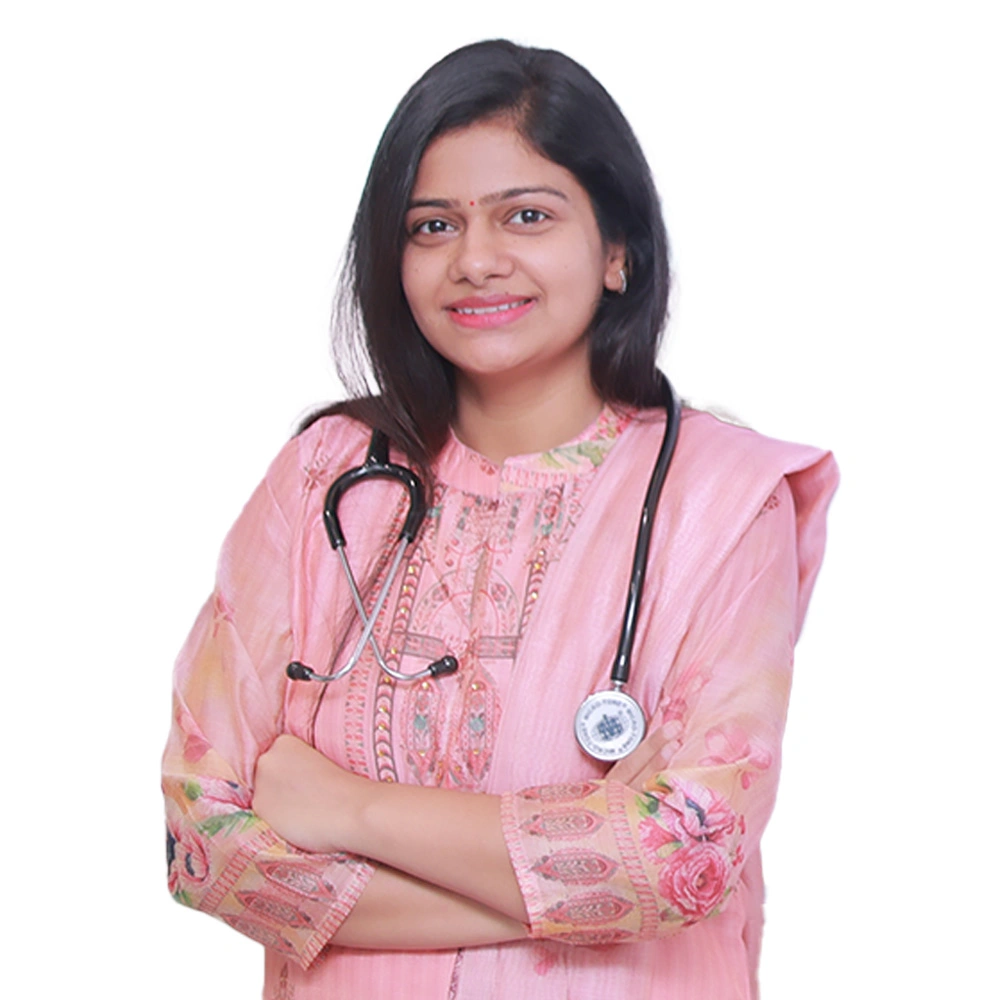
Blocked Fallopian Tube – Causes, Symptoms and Treatment

Table of Contents
- What are Fallopian Tubes
- Causes of Blocked Fallopian Tubes
- What Happens if the Fallopian Tubes are Blocked?
- Types of Blocked Fallopian Tube
- Complications of Blocked Fallopian Tubes
- Symptoms of Blocked Fallopian Tubes
- Blocked Fallopian Tube Diagnosis
- Effects of Blocked Fallopian Tube on Fertility
- How to Become Pregnant with Blocked Fallopian Tubes?
- Blocked Fallopian Tube Treatment
- Preventing Blocked Fallopian Tube
- FAQs
Pregnancy and motherhood are significant milestones for a large section of women in India. The dream of becoming a mother and wishing to start a journey towards parenthood, however, comes with numerous challenges for some. Achieving pregnancy is not as easy as it may seem. According to AIIMS, nearly 10-15% of couples in India experience some form of female infertility issues. One of the major contributing factors to this high incidence is blocked fallopian tubes.
According to a study, fallopian tube obstructions are attributed to about 19.1% of infertility cases.
What are Fallopian Tubes
The fallopian tubes, also known as uterine tubes, are two muscular thin tubes which connect the ovaries to the uterus. Every menstrual cycle, during ovulation, the released egg reaches the uterus through the fallopian tubes. To achieve a pregnancy, the sperm must travel through the vagina and fertilise the egg inside the fallopian tubes. The fertilised egg or embryo then travels to the uterus and attaches itself to the uterine lining (endometrium) and continues to grow. In case of blocked fallopian tubes or damaged fallopian tubes, fertility treatments are generally required to become successfully pregnant, especially if both tubes are affected. Fertility issues caused by blocked or damaged fallopian tubes are also known as tubal factor infertility.
Causes of Blocked Fallopian Tubes
A blocked fallopian tube is among the top causes of infertility in women. In this condition, the passage of the fallopian tubes is obstructed or blocked.
Due to this, the fallopian tubes cannot function properly. It hinders the transport of healthy sperm cells into the female reproductive system as well as obstructs the passage of mature eggs from the ovaries. This anatomical disruption causes problems with fertilisation. When fertilisation cannot happen, you cannot achieve conception.
Blocked fallopian tubes can be caused due to a range of factors including underlying medical conditions or a history of medical/ surgery interventions.
Common blocked fallopian tube causes include:
- Pelvic inflammatory diseases – Pelvic inflammatory disease (PID) or a pelvic infection is a bacterial infection that can affect the upper parts of the female reproductive system including the uterus, fallopian tubes and ovaries. PID can affect one or more organs at a time. It spreads through the transmission of sexually transmitted bacteria and causes severe pelvic pain, fever and scars and blockages in the fallopian tubes.
- Sexually transmitted diseases – There are several different types of sexually transmitted diseases (STDs) that can cause inflammation in the pelvis. Chlamydia and gonorrhoea are some common STDs that can lead to pelvic infection, thereby, causing scars and obstructions in the fallopian tubes.
- Endometriosis – Endometriosis is a condition in which tissue similar to the tissue lining the uterus begins to grow outside the uterus causing excessive pain. This extra tissue can begin to grow on other reproductive organs including the fallopian tubes. The additional tissue on the fallopian tubes can cause obstructions in the fallopian tube.
- History of pelvic surgery – A history of abdominal or pelvic surgical interventions on the fallopian tubes can cause adhesions on the fallopian tubes causing blockages. Some common surgeries that may cause this risk include surgery to remove uterine fibroids and ovarian cysts.
- Past ectopic pregnancy – Ectopic pregnancy is when the embryo attaches itself somewhere other than the uterus. Ectopic pregnancies cannot be carried to term and often medical termination of pregnancy is required. This treatment and the pregnancy itself can cause scarring in the affected tube and in severe cases the tube may have to be removed as well.
- Fibroids – Fibroids are small benign (non-cancerous) growths that can develop in the uterus. They can block the fallopian tubes, especially where they join the uterus and also cause complications in carrying a pregnancy to term.
What Happens if the Fallopian Tubes are Blocked?
If the fallopian tubes are blocked, what happens to the egg? Where does it go? Can you still get pregnant? Here are some answers:
- If one tube is blocked, the egg can still travel through the other side. So there’s still a chance you can get pregnant naturally.
- But if both tubes are blocked, it’s almost impossible to get pregnant without treatment. At least one tube needs to be open.
- If there is a partial blockage in one or both tubes, it may still be possible for an egg to be fertilised. However, there is a higher risk of an ectopic pregnancy, where the fertilised egg implants in the tube instead of the uterus.
- If the egg does not enter the tube at all, it dissolves or is absorbed by the body over time.
Types of Blocked Fallopian Tube
The blockage can happen in different parts of the tube or tubes:
- Proximal – Near the uterus
- Distal – Near the ovary
- Hydrosalpinx – When fluid fills up the blocked tube
Complications of Blocked Fallopian Tubes
Blocked fallopian tubes can result in complications and on of the most common is infertility. Women with blocked fallopian tubes face difficulty in getting pregnant naturally. However, if one of the two fallopian tubes is open and healthy, there is still a possibility to conceive a baby.
However, it is said that complications such as a blocked fallopian tube can aggravate your fertility issues. Partially blocked fallopian tubes may allow fertilisation, but at times the fertilised egg gets stuck in the tube passage. This leads to scarring, inflammation, or blockages in the fallopian tubes, which increases your chances of an ectopic pregnancy.
Symptoms of Blocked Fallopian Tubes
The symptoms of blocked fallopian tubes are usually not observed. It is because the menstrual cycle may not be affected by the blockage in the fallopian tube. Usually, women present with difficulty in conception or related infertility issues that are later diagnosed as blocked fallopian tubes either during routine fertility investigations or when the patient visits a fertility specialist when unable to conceive. However, hydrosalpinx – fluid-filled fallopian tubes can cause lower abdominal pain and unusual discharge from the vagina. In patients with conditions like endometriosis and PID, the risk of blocked fallopian tubes is higher and tubal patency tests are generally recommended when they are trying to conceive.
Common blocked fallopian tube symptoms include:
- Infertility – The primary symptom of a blocked fallopian tube is the inability to get pregnant. Women often experience obstacles in achieving conception. Infertility is recognised when a woman cannot get pregnant after more than 12 months of trying. When a couple struggles with conception, they may seek the help of a healthcare provider who would, then, diagnose this condition.
- Pelvic pain – Fallopian tube disruptions can cause general pain and discomfort in the pelvic and/or abdominal area. The severity of this pain differs in women. Some women may experience intense pelvic pain usually around the time of their periods while others have felt it constantly. You may experience some pain on one side of the abdomen. It usually happens when one of the fallopian tubes fills with a certain type of fluid causing enlargement.
- Pain during intercourse – A large number of women experience some level of pain during sexual intercourse. One of the most common reasons behind this is a pelvic inflammatory disease that can be an indicator of blocked fallopian tubes.
- Unusual vaginal discharge – Vaginal discharge is very common in women. However, foul-smelling, abnormal discharge from the vaginal can be a sign of a blocked fallopian tube. Damage or blockage on the end portion of the fallopian tube can lead to the accumulation of clear fluid. This condition is known as hydrosalpinx. Hydrosalpinx can cause an unusually discoloured or sticky vaginal discharge.
- High fever – One of the blocked fallopian tube symptoms includes high fever and a general sense of feeling unwell. You may experience a moderate or high-grade fever of over 102 degrees Celsius. However, this symptom is usually present in acute cases.
- Nausea and vomiting – Some women may also experience acute cases of a nauseous feeling and slight vomiting as a result of fallopian tube blockages.
Blocked Fallopian Tube Diagnosis
In most cases, blocked fallopian tubes are diagnosed when a woman presents with the above-given symptoms and primarily an inability to conceive.
Your fertility speciality will order one or more of the following tests and procedures to diagnose blocked fallopian tubes:
HSG test
HSG test stands for Hysterosalpingography. HSG is a fallopian tube blockage test in which an X-ray test is done to visualise and examine the internal lining of the uterus. This test is primarily done to detect and diagnose fallopian tube blockages. In this test, your doctor directly views your uterus by threading a thin tube through the vagina and cervix. Then, a contrast dye is injected into the uterus to help produce real-time X-ray images in order to detect any abnormalities.
Laparoscopy
Diagnostic laparoscopy is a minimally invasive procedure through which your doctor is able to look directly at the insides of your pelvic region. This procedure is indicated for some cases where the HSG test has not been able to give much clarity on very small blockages. On the other hand, sometimes, an ultrasound scan can also provide a better view of large blockages.
Hysteroscopy
Unlike laparoscopy, hysteroscopy does not involve any incisions. In this procedure, a long thin, tube-like and hollow viewing instrument called a hysteroscope is inserted into the uterus through the vagina. In some cases, specialised instruments are inserted through the hysteroscope to treat issues that may be interfering with fertility. This is a day-care procedure that requires no hospitalisation.
Sonohysterography (SSG)
In Sonohysterography (SSG) a transvaginal ultrasound is done and the flow of a sterile fluid or saline solution in the reproductive system is studied. If the fluid will stop flowing in case of any blockage.
Hysterosalpingocontrast sonography (HyCoSy)
Hysterosalpingocontrast sonography (HyCoSy) is an advanced imaging procedure that unlike HSG does not involve x-rays. In HyCoSy, 3D ultrasound is used to study the flow of an ultrasound contrast medium in the reproductive system. Similar to HSG, blockages are indicated if the fluid stops at any point.
All these procedures are minimally invasive and generally require no hospitalisation.
Effects of Blocked Fallopian Tube on Fertility
Blocked fallopian tubes can lead to infertility, hindering your ability to get pregnant. It is, however, still possible to get pregnant with this condition if one of the two fallopian tubes is open and healthy.
However, blocked fallopian tube complications can worsen your pregnancy symptoms. Partially blocked fallopian tubes may allow fertilisation but result in the fertilised egg being stuck in the tube passage.
Scarring, inflammation or blockages in the fallopian tubes can significantly increase your risk of experiencing an ectopic pregnancy.
Ectopic pregnancy is a complication that occurs when a fertilised egg implants itself and begins to grow outside the main uterine cavity. It is a serious complication that requires early medical intervention as an embryo cannot grow and sustain outside the uterus.
When an ectopic pregnancy occurs in the fallopian tubes, it is known as a tubal pregnancy.
If left untreated, an ectopic pregnancy can have life-threatening complications such as internal bleeding.
What People Ask…
Can you still have periods with blocked tubes?
Yes, you can still get your period even if your fallopian tubes are blocked. The blockage affects the egg’s ability to travel through the tube, but it doesn’t change your menstrual cycle.
Can you still ovulate with blocked tubes?
Yes, blocked fallopian tubes don’t affect ovulation. Your ovaries will still release eggs, but the eggs can’t travel through the blocked tubes to meet the sperm or get to the uterus.
How to Become Pregnant with Blocked Fallopian Tubes?
If you have one healthy and open fallopian tube, you may still be able to become pregnant without needing IVF as long as there is an indication that ovulation occurs from the ovary present on the same side as the healthy tube. In such cases, if natural conception is not occurring, ovarian stimulation or IUI with ovarian stimulation may be recommended to help you become pregnant.
However, if both tubes are affected, medical intervention will be needed to conceive. Treatments for blocked fallopian tubes also include laparoscopy and hysteroscopy. The success of these treatments depends on the severity and location of the blockage. IVF treatment on the other hand is extremely effective in achieving pregnancy in spite of even severe tubal patency as it completely avoids the fallopian tubes.
If you wish to learn more about our fertility treatments or are looking for blocked fallopian tube treatment in India, you can reach out to us and we will get back to you at the earliest.
Blocked Fallopian Tube Treatment
Tubal infertility is one of the most common infertility problems in women. You can effectively treat infertility issues caused by this condition. Blocked fallopian tube treatment is based on various factors such as the severity of symptoms, the extent of blockage, location of the blockage, your age, overall health and fertility goals.
Laparoscopic surgery:
Laparoscopic surgery is a minimal access procedure to help access and treat the abnormalities in the fallopian tubes. In this surgical procedure, your doctor makes several small incisions on your pelvic region. Through these incisions, the surgeon inserts a thin tube with an attached camera at one of its ends to access the scar tissues causing the blockages. The surgeon then repairs the blockages and closes the incisions. Laparoscopic surgery offers a range of benefits to the patients including faster recovery, no or minimal scarring, fewer risk of infections and complications and shorter hospital stay.
In-vitro fertilisation (IVF):
Women with blocked fallopian tubes can opt for Assisted Reproductive Technology (ART) methods. IVF treatment is among the top solutions for women with this condition to achieve and attain a healthy pregnancy. In an IVF procedure, your fertility doctor retrieves the mature egg and fertilises it with the sperm in an IVF lab. The resulting embryo is then directly implanted in the lining of the uterus. Through IVF treatment, you can bypass the role of fallopian tubes and still achieve a pregnancy.
FTR (fallopian tube recanalisation):
This procedure can open up blocked tubes without surgery. It is minimally invasive and the technical success rate is generally high.
Salpingostomy:
The doctor creates a new opening in the fallopian tube with surgery. This approach is typically used in cases where the tubes are blocked and cannot be recanalised effectively.
Fimbrioplasty:
Surgery to fix the end part of the tube. Fimbrioplasty focuses on repairing the fimbriae, which are the finger-like projections at the end of the fallopian tubes.
Salpingectomy:
In cases where the tubes are blocked entirely, they might need to be removed. This procedure is often necessary when there is extensive damage or blockage that cannot be repaired.
Preventing Blocked Fallopian Tube
Preventing blocked fallopian tubes is key. Here are some things that can help lower your risk:
- Practice safe sex: Using protection can prevent STIs that can lead to PID and blocked tubes.
- Treat pelvic infections right away: Getting prompt treatment for infections can stop long-term damage to your tubes.
- Maintain a healthy lifestyle: Eating well and exercising regularly is good for overall reproductive health, but it doesn’t directly prevent tube blockages.
Word From an Expert:
A blocked fallopian tube is a highly prevalent condition causing infertility in women. This condition can cause a range of complications for women who are trying to conceive or who are already pregnant. It is, thus, important to b aware of blocked fallopian tube symptoms. Understanding the signs, symptoms and associated causes of tubal infertility can assist you in seeking timely treatment and fertility care. ~ Dr. Aashita Jain
FAQs
- What are the signs and symptoms of blocked fallopian tubes?
The primary blocked fallopian tube symptom is infertility. Other common symptoms include pelvic pain, vaginal discharge with an odd odour, pain during sexual intercourse and nausea & vomiting.
- How can I get pregnant with blocked fallopian tubes?
It is possible to get pregnant with blocked fallopian tubes with the help of laparoscopic surgery to treat tubal abnormalities and with an IVF treatment.
- Can blocked fallopian tubes be treated?
Yes, blockages in fallopian tubes can be treated via surgery.
- How common are blocked fallopian tubes?
Blocked fallopian tubes are highly common across the globe. Tubal factor infertility amounts to about 19% of all infertility cases in India.
Our Fertility Specialists
Related Blogs
To know more
Birla Fertility & IVF aims at transforming the future of fertility globally, through outstanding clinical outcomes, research, innovation and compassionate care.
Had an IVF Failure?
Talk to our fertility experts

 Our Centers
Our Centers













